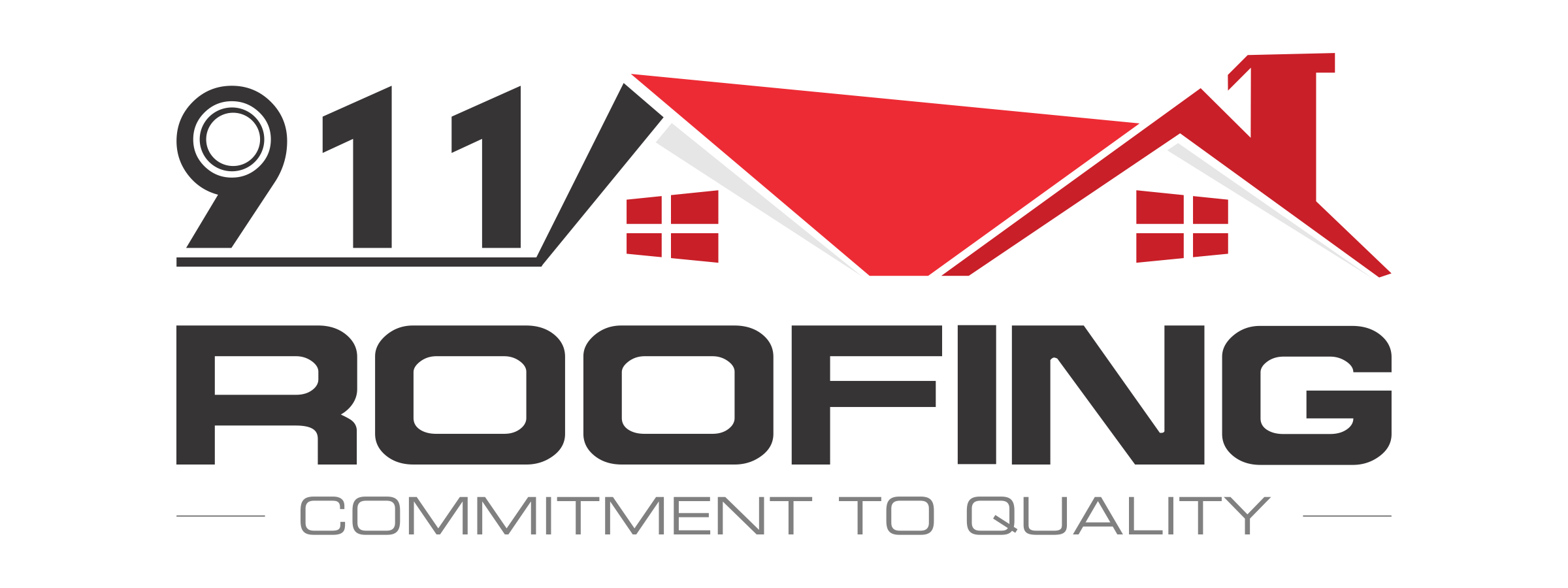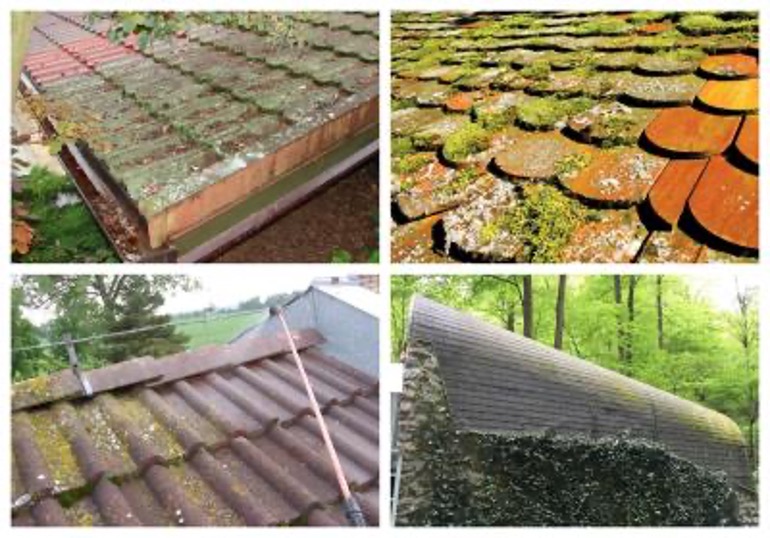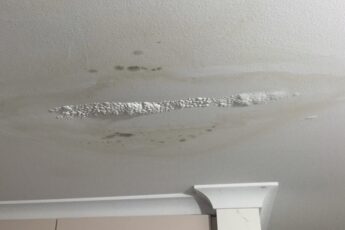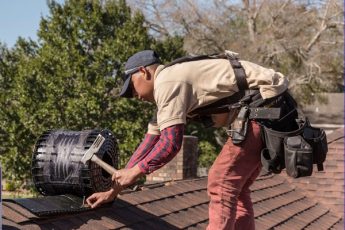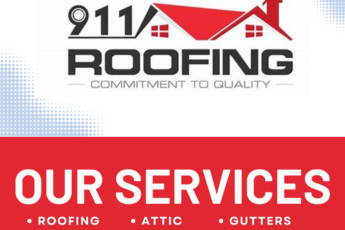Shaded and north facing roofs have higher humid surface levels and are more likely to be covered with moss, algae or lichens. They are capable of growing on every type of roofing material. However, it is important that you remove the green algae and moss from your roof.
Unfortunately these organisms leave stains on the roof shingles, severely affecting the look of your house and reducing the value of the house. Mostly, these stains are just a cosmetic issue, but sometimes these can be symptoms of something worse leading to serious damage or even roof failure. Normally it is easy to find the cause of the strain, even to getting rid of them and preventing them from recurring. So this becomes more necessary that you remove these moss and algae from your new roof to maintain its prolonged life.
COMMON CAUSES OF STAINING
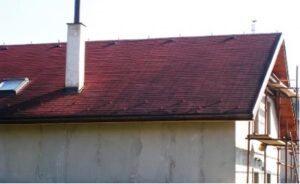

Dark stains on a shingle roof could be caused by different causes:

Algae mostly causes strain which color from blue, green or black stains. These strains starts as small spots and over the time develop into streaks. More often algae stains are mistaken for mold or mildew. Algae just effects appearance of the roof, other than that it is harmless.

Velvety green masses of moss often grow on the north-facing side of roof surfaces and on tree-shaded roofs. Unlike the algae, leaving moss on the roof surfaces can develop bigger problems. Moss infiltrates the roof structure by going underneath the shingles, causing the shingle edges lift and curl. These lifted and curled shingles can lead to cracking and blow-off during high winds and storms. Heavy moss growth can lead to formation of dams leading to accumulation of water, further causing water to back up underneath the roof shingles and damaging the roof deck. Moss should be cleaned as soon as it is noticed on the roof.
DIY Algae and Moss Removal
If you are wondering how to remove Algae and moos from your roof or siding, then please keep reading. Removing Algae and moss from a shingle roof is an easy job. Liquid solutions that are made to kill moss are easily available at most of the supply stores, you can even make your own moss remover in a large spray bottle with one of our four recipes:
- 240 ml dish washing soap + 2 gallon of water
- 450 grams powdered oxygen bleach + 2 gallon of water
- 500 ml chlorine bleach + 2 gallon of water
- 500 ml white distilled vinegar +2 gallon of water
Before using one of these homemade solutions, the roof should first be wetted with plain water, then apply our cleaning solution and let it rest for 30 to 45 minutes. Lightly scrub your roof with a soft-bristle brush, and then rinse with water.
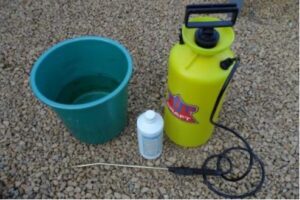
Safety first
Before you start the process of removing Algae and moss from your roof. You have to consider some safety precautions. Bleach and some other chemicals can be harmful to humans; so always take precautions when working with them.
- Clean your roof on a calm and windless day.
- Protect your plants by first sprinkling water over them and then covering then by tarp. This way it protects them incase of chemical over spray and runoff.
- Own safety: wear protective clothing with long sleeves, pants and gloves. Wear goggles to protect your eyes and wear shoes with high-traction soles to avoid slipping of wet moss infested roof.
Working on a wet roof is a dangerous task, taking adequate safety precautions is must. Avoid working on steep roofs, wear non slip shoes and use a safety rope and harness. Always work in buddy with one standing below when you are on the roof. It is recommended that a professional be called to do this job for you.
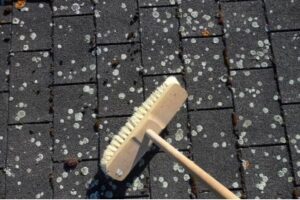

How to clean algae and moss from a roof?
Best day for such kind of work is a calm and cloudy day, so that the liquid does not dry up quickly. Use a garden sprayer to apply the solution. Let the solution be on the surface for few hours and in case of rain, reapply the solution for its effectiveness. You will see results in next few weeks.
If you are using bleach mixtures do not let it stand on the roof surface more than 20-30 minutes. Rinse the roof with water using your garden hose.
* Do not use a pressure washer, as high pressure water can cause damage the shingles by removing their upper protective layer of asphalt granules.
In case of heavy accumulations of algae or moss, mostly part of it gets washed off with the stream from the garden hose. Using a brush with medium-stiff bristles can be used to brush off algae and moss, but make sure you don’t scrub too hard as that will brush off the mineral granules from the shingles.
In an even of algae, moss or heavy stains persists on surface after rinsing, let the roof dry, and then spray the bleach solution again. Wait again for 30 minutes and rinse with a hose. If still some strains remains, they should get washed away as the roof is exposed to rain and sunlight over the time.
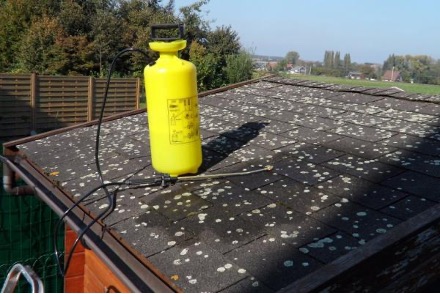
How to prevent algae and moss stains from recurring?
Algae and moss commonly grows on shaded roof surfaces as they remain humid. Cutting off tree branches overhanging over the roof and blocking sunlight is surely a bit step in keeping off algae and moss from the roof. Roof surface should be kept clean off the leaves and fallen branches.
Installing zinc or copper strips can be a long term measure in stain prevention. These zinc or copper strips are installed under the ridge cap shingles, leaving 6 cm of the surface exposed at roof peaks, along hips, and under the first course of shingles at the base of dormers. Copper and zinc are known as sacrificial metals and shed tiny fragments of their surface with each rainfall, thus covering the roof surface by giving it a metal coat the roof and ban organic growth for many years.

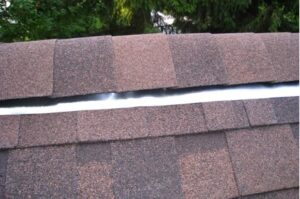 |
|
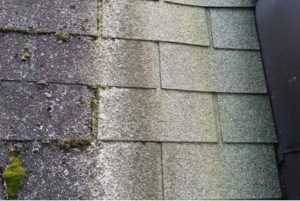 |
Following these maintenance tips can help you enjoy your attractive roof. They can also help extend your roof’s service life, which is important whether you plan to stay in your home or sell it in the future.
More tips on maintenance and protection of your roof can be found in our blogs at www.911roofing.com
Good luck!
